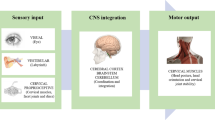Abstract
Twenty patients with mandibular dysfunction, 10 acute and 10 chronic, were trained with electromyographic biofeedback from either m. masseter or m. frontalis area. The electromyographic activity in both muscle areas were recorded during six training sessions. The mean electromyographic activity decreased significantly within the sessions for both muscle areas, progressively more often for the m. masseter area. The activity did not decrease significantly between sessions for any muscle area. The clinical and subjective symptoms of mandibular dysfunction improved significantly after the training. No differences, electromyographically or clinically, among acute, chronic, m. masseter area, or m. frontalis area feedback patients could be observed. No correlation between decrease in electromyographic activity and symptoms could be established. Since a simplistic neuromuscular learning model for biofeedback training gains little support from these results, alternative views are discussed.
Similar content being viewed by others
References
Bradley, J. V. (1968).Distribution-free statistical tests. London: Prentice-Hall.
Budzynski, T., & Stoyva, J. (1973). An electromyographic feedback technique for teaching voluntary relaxation of the masseter muscle.Journal of Dental Research, 52 116–119.
Carlsson, G. E., & Helkimo, M. (1972). Funktionell undersökning av tuggapparaten. In J. J. Holst (Ed.),Nordisk klinisk odontologi (8-II, pp. 1–12). Copenhagen: A/S Forlaget for Faglitteratur.
Carlsson, S. G., & Gale, E. N. (1976). Biofeedback treatment for muscle pain associated with the temporomandibular joint.Journal of Behavior Therapy and Experimental Psychiatry, 7 383–385.
Carlsson, S. G., & Gale, E. N. (1977). Biofeedback in the treatment of long-term temporomandibular joint pain.Biofeedback and Self-Regulation, 2 161–171.
Carlsson, S. G., Gale, E. N., & öhman, A. (1975). Treatment of temporomandibular joint syndrome with biofeedback training.Journal of the American Dental Association, 91 602–605.
Dahlström, L., Carlsson, G. E., & Carlsson, S. G. (1982). Comparison of effects of electromyographic biofeedback and occlusal splint therapy on mandibular dysfunction.Scandinavian Journal of Dental Research, 90 151–156.
Dohrman, R. J., & Laskin, D. M. (1978). An evaluation of electromyographic biofeedback in the treatment of myofascial pain-dysfunction syndrome.Journal of the American Dental Association, 96 656–662.
Gessel, A. H. (1975). Electromyographic biofeedback and tricyclic antidepressants in myofascial pain-dysfunction syndrome. Psychological predictors of outcome.Journal of the American Dental Association, 91 1048–1052.
Greene, C. S., & Laskin, D. M. (1972). Splint therapy for the myofascial pain-dysfunction (MPD) syndrome: A comparative study.Journal of the American Dental Association, 84 624–628.
Helkimo, M. (1974). Studies on function and dysfunction of the masticatory system. II. Index for anamnestic and clinical dysfunction and occlusal state.Swedish Dental Journal, 67 101–121.
Laskin, D. M., & Greene, C. S. (1972). Influence of the doctor-patient relationship on placebo therapy for patients with myofascial pain-dysfunction (MPD) syndrome.Journal of the American Dental Association, 85 892–894.
Lippold, O. C. J. (1967). Electromyography. In P. H. Venables & I. Martin (Eds.),A manual of psychophysiological methods (pp. 247–297). New York: Wiley.
Principato, J. J., & Barwell, D. R. (1978). Biofeedback training and relaxation exercises for treatment of temporomandibular joint dysfunction.Journal for Oto-Rhino-Laryngology and Its Borderlands, 86 766–769.
Rappaport, A. F., Cramer, L., Cannistracci, A., Gelb, H., & Strong, D. (1977). EMG biofeedback for the treatment of bruxism: A stress control program. In D. H. Morgan (Ed.),Diseases of the temporomandibular aparatus—A multi-discipline approach (pp. 386–403). New York: Mosby.
Siegel, S. (1956).Nonparametric statistics (pp. 96–104; 261). New York: McGraw-Hill.
Zarb, G. A., & Speck, J. E. (1979). The treatment of mandibular dysfunction. In G. A. Zarb & G. E. Carlsson (Eds.),Temporomandibular joint. Function and dysfunction. (p. 374).
Author information
Authors and Affiliations
Additional information
This research was supported by grants to Sven G. Carlsson and Elliot N. Gale from the Swedish Council for Research in the Humanities and Social Sciences.
Rights and permissions
About this article
Cite this article
Dahlström, L., Carlsson, S.G., Gale, E.N. et al. Clinical and electromyographic effects of biofeedback training in mandibular dysfunction. Biofeedback and Self-Regulation 9, 37–47 (1984). https://doi.org/10.1007/BF00998844
Issue Date:
DOI: https://doi.org/10.1007/BF00998844




